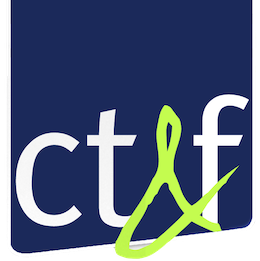Analysis of the operation of an industrial reforming furnace based on plant data and process simulation
Abstract
A fundamental process in the clean-fuels chain corresponds to the steam methane reforming (SMR), which generates the hydrogen needed for production of low-sulphur fuels. The identification of opportunities to increase hydrogen production involves the analysis of variables that affects heat supply in the SMR furnace (preheating and reaction section). This document presents the main results of an analysis of heat supply in an industrial SMR furnace based on both, data analysis and simulation with Aspen HYSYS. To such end, eight-year-process-operation data were collected and analysed with kmeans multivariate algorithm. The simulation was validated with pertinent design data and compared to process data. Next, the simulation was applied to explore the operating surface of the furnace to identify conditions with major hydrogen production. According to the results, the statistical analysis by kmeans divided the data into two operational modes that were representative for the furnace; one of them showed the major H2 production. Similarly, the simulation results suggested that the increase in H2 generation was stabilized with the highest values of both heat and natural gas, tending towards a steady state value.
References
Abbas, S. Z., Dupont, V., & Mahmud, T. (2017). Kinetics study and modelling of steam methane reforming process over a NiO/Al2O3 catalyst in an adiabatic packed bed reactor. International journal of hydrogen Energy, 42(5), 2889-2903.https://doi.org/10.1016/j.ijhydene.2016.11.093
Amran, U. I., Ahmad, A., & Othman, M. R. (2017). Kinetic based simulation of methane steam reforming and water gas shift for hydrogen production using aspen plus. Chemical Engineering Transactions, 56, 1681-1686. https://www.researchgate.net/profile/Mohamad-Othman-7/publication/316540135_Kinetic_Based_Simulation_of_Methane_Steam_Reforming_and_Water_Gas_Shift_for_Hydrogen_Production_Using_Aspen_Plus/links/5902c96ca6fdcc8ed511a17a/Kinetic-Based-Simulation-of-Methane-Steam-Reforming-and-Water-Gas-Shift-for-Hydrogen-Production-Using-Aspen-Plus.pdf
Barelli, L., Bidini, G., Gallorini, F., & Servili, S. (2008). Hydrogen production through sorption-enhanced steam methane reforming and membrane technology: a review. Energy, 33(4), 554-570. https://doi.org/10.1016/j.energy.2007.10.018
Box, G. E., Hunter, J. S., & Hunter, W. G. (2018). Estadística para investigadores: Diseño, innovación y descubrimiento. Reverté. https://books.google.com/books?hl=es&lr=&id=0RfeDwAAQBAJ&oi=fnd&pg=PR9&dq=Box,+G.E.,+Hunter,+J.S.,+Hunter,+W.G.+(2008).+Estad%C3%ADstica+para+investigadores:+Dise%C3%B1o,+innovaci%C3%B3n+y+descubrimiento.+Espa%C3%B1a.+Segunda+edici%C3%B3n,+editorial+Revert%C3%A9&ots=I2TAB6NZzs&sig=rmLqTM_W5P2Mk5DH6KrxFajHEp8.
Challiwala, M. S., Ghouri, M. M., Linke, P., El-Halwagi, M. M., & Elbashir, N. O. (2017). A combined thermo-kinetic analysis of various methane reforming technologies: Comparison with dry reforming. Journal of CO2 Utilization, 17, 99-111. https://doi.org/10.1016/j.jcou.2016.11.008
CONPES 3943. (2018). Política para el Mejoramiento de la Calidad del Aire. Departamento Nacional de Planeación. https://colaboracion.dnp.gov.co/CDT/Conpes/Económicos/3943.pdf
Dalmaijer, E. S., Nord, C. L., & Astle, D. E. (2022). Statistical power for cluster analysis. BMC Bioinformatics, 23, 205. https://doi.org/10.1186/s12859-022-04675-1
DANE. (2023). https://www.dane.gov.co/index.php/estadisticas-por-tema/comercio-internacional/exportaciones
DANE a. (2023). https://www.dane.gov.co/index.php/estadisticas-por-tema/comercio-internacional/importaciones
Ehteshami, S.M.M. & Chan, S.H. (2014). Techno-economic study of hydrogen production via steam reforming of methanol, ethanol, and diesel. Energy Technology & Policy, 1(1), 15–22. https://doi.org/10.1080/23317000.2014.933087
Er-Rbib, H., Bouallou, C., & Werkoff, F. (2012). Production of synthetic gasoline and diesel fuel from dry reforming of methane. Energy Procedia, 29, 156-165. https://doi.org/10.1016/j.egypro.2012.09.020
Ewens, W. J., & Brumberg, K. (2023). Introductory Statistics for Data Analysis. Springer Nature.https://doi.org/10.1007/978-3-031-28189-1
Faheem, H. H., Tanveer, H. U., Abbas, S. Z., & Maqbool, F. (2021). Comparative study of conventional steam-methane-reforming (SMR) and auto-thermal-reforming (ATR) with their hybrid sorption enhanced (SE-SMR & SE-ATR) and environmentally benign process models for the hydrogen production. Fuel, 297, 120769. https://doi.org/10.1016/j.fuel.2021.120769
Fan, J., Zhu, L., Jiang, P., Li, L., & Liu, H. (2016). Comparative exergy analysis of chemical looping combustion thermally coupled and conventional steam methane reforming for hydrogen production. Journal of cleaner production, 131, 247-258. https://doi.org/10.1016/j.jclepro.2016.05.040
Fox, J. (2016). Using the R commander: a point-and-click interface for R. Chapman and Hall/CRC. https://www.john-fox.ca/RCommander/index.html.
Gokilavani, N., & Bharathi, B. (2021). Test case prioritization to examine software for fault detection using PCA extraction and K-means clustering with ranking. Soft Computing, 25(7), 5163–5172. https://doi.org/10.1007/s00500-020-05517-z
IEA (2019), The Future of Hydrogen, IEA, Paris https://www.iea.org/reports/the-future-of-hydrogen, Licence: CC BY 4.0. https://iea.blob.core.windows.net/assets/9e3a3493-b9a6-4b7d-b499-7ca48e357561/The_Future_of_Hydrogen.pdf (Accessed on 30 April 2024).
Iftikhar, N., Baattrup-Andersen, T., Nordbjerg, F. E., & Jeppesen, K. (2020). Outlier detection in Sensor Data Using Ensemble Learning. Procedia Computer Science, 176, 1160–1169. https://doi.org/10.1016/j.procs.2020.09.112
Jabbour, K., Massiani, P., Davidson, A., Casale, S., & El Hassan, N. (2017). Ordered mesoporous “one-pot” synthesized Ni-Mg (Ca)-Al2O3 as effective and remarkably stable catalysts for combined steam and dry reforming of methane (CSDRM). Applied Catalysis B: Environmental, 201, 527-542. https://doi.org/10.1016/j.apcatb.2016.08.009
Janbarari, S.R. & Najafabadi, A.T. (2023). Simulation and optimization of water gas shift process in ammonia plant: Maximizing CO conversion and controlling methanol by product. International Journal of Hydrogen Energy, 48, 25158-25170. https://doi.org/10.1016/j.ijhydene.2022.12.355
Jesper, M., Pag, F., Vajen, K., & Jordan, U. (2021). Annual Industrial and Commercial Heat Load Profiles: Modeling based on K-Means clustering and regression analysis. Energy Conversion and Management. X, 10, 100085. https://doi.org/10.1016/j.ecmx.2021.100085
Kumar, A., Baldea, M., & Edgar, T. F. (2016). Real-time optimization of an industrial steam-methane reformer under distributed sensing. Control Engineering Practice, 54, 140-153.https://doi.org/10.1016/j.conengprac.2016.05.010
Kumar, A., Edgar, T. F., & Baldea, M. (2017). Multi-resolution model of an industrial hydrogen plant for plantwide operational optimization with non-uniform steam-methane reformer temperature field. Computers & Chemical Engineering, 107, 271-283.https://doi.org/10.1016/j.compchemeng.2017.02.040
Lao, L., Aguirre, A., Tran, A., Wu, Z., Durand, H., & Christofides, P. D. (2016). CFD modeling and control of a steam methane reforming reactor. Chemical Engineering Science, 148, 78-92.. https://doi.org/10.1016/j.ces.2016.03.038
Li, L., Wang, Y., Sun, B., & Qian, Y. (2020). Operating Performance Assessment for Transition State of Industrial Processes. Chemical Engineering & Technology, 43(12), 2567–2575. https://doi.org/10.1002/ceat.201900657
Lund, B., & Ma, J. (2021). A review of cluster analysis techniques and their uses in library and information science research:k-meansandk-medoidsclustering. Performance Measurement and Metrics, 22(3), 161–173. https://doi.org/10.1108/pmm-05-2021-0026
MinHacienda. Definición de ingresos petroleros para efectos del funcionamiento de la regla fiscal (2022). https://www.minhacienda.gov.co/webcenter/ShowProperty?nodeId=%2FConexionContent%2FWCC_CLUSTER-197896%2F%2FidcPrimaryFile&revision=latestreleased
Minette, F., Lugo-Pimentel, M., Modroukas, D., Davis, A., Gill, R. S., Castaldi, M. J., & De Wilde, J. (2018). Intrinsic kinetics of steam methane reforming on a thin, nanostructured and adherent Ni coating. Applied Catalysis. B, Environmental, 238, 184–197. https://doi.org/10.1016/j.apcatb.2018.07.015
Moskowitz, I. H., Seider, W. D., Soroush, M., Oktem, U. G., & Arbogast, J. E. (2015). Chemical process simulation for dynamic risk analysis: a steam–methane reformer case study. Industrial & Engineering Chemistry Research, 54(16), 4347-4359. https://doi.org/10.1021/ie5038769
NDC. (2030). Actualización de la Contribución Determinada a Nivel Nacional de Colombia (NDC). Gobierno de Colombia. https://unfccc.int/sites/default/files/NDC/2022-06/NDC%20actualizada%20de%20Colombia.pdf (Accessed on 30 April 2024).
Posada, A., & Manousiouthakis, V. (2005). Heat and power integration of methane reforming based hydrogen production. Industrial & engineering chemistry research, 44(24), 9113-9119. https://doi.org/10.1021/ie049041k
R Core Team (2021). R: A language and environment for statistical computing. R Foundation for Statistical Computing, Vienna, Austria. https://www.R-project.org/.
Rao, S.G. & Govardhan. (2015). Performance Validation of the Modified K-means Clustering Algorithm cluster Data. International Journal of Scientific and Engineering Research, 6, 726-730.
Rodríguez, D. H. (2022). COVID-19 in Colombia: repercussions on the economy. SUMMA: Revista disciplinaria en ciencias económicas y sociales, 4(1), 4. https://doi.org/10.47666/summa.4.1.04.
Rostrup-Nielsen, J., & Christiansen, L. J. (2011). Concepts in syngas manufacture (Vol. 10). World Scientific. https://doi.org/10.1142/p717
Singh, A. P., Singh, S., Ganguly, S., & Patwardhan, A. V. (2014). Steam reforming of methane and methanol in simulated macro & micro-scale membrane reactors: Selective separation of hydrogen for optimum conversion. Journal of Natural Gas Science and Engineering, 18, 286–295. https://doi.org/10.1016/j.jngse.2014.03.008
Soloviev, S. O., Gubareni, I. V., & Orlyk, S. M. (2018). Oxidative reforming of methane on structured nickel–alumina catalysts: A review. Theoretical and Experimental Chemistry, 54, 293-315.https://doi.org/10.1007/s11237-018-9575-5
Song, C., Liu, Q., Ji, N., Kansha, Y., & Tsutsumi, A. (2015). Optimization of steam methane reforming coupled with pressure swing adsorption hydrogen production process by heat integration. Applied Energy, 154, 392–401. https://doi.org/10.1016/j.apenergy.2015.05.038
UPME. (2023). Resolución No. 000762 de 2023. https://www1.upme.gov.co/Normatividad/762_2023.pdf (accessed on 30 April 2024).
Thakare, Y. S., Bagal, S. B., Kulkarni, U. V., Doye, D. D., Sontakke, T. R., Vadivel, A., Majumdar, A. K., Hung, M., Wu, J., Chang, J., quotAn, Wang, J., Su, X., Mankad, N., Eltibi, M.F., & Ashour, W. M. (2015). Performance Evaluation of K-means Clustering Algorithm with Various Distance Metrics. International Journal of Computer Applications, 110, 12-16. https://doi.org/10.5120/19360-0929
Taborga, C. E. V., Castellón, R. V., & Taborga, O. Á. V. (2011). Determinación del tamaño muestral mediante el uso de árboles de decisión. UPB-Investig. Desarro, 11, 148-176.. https://doi.org/10.23881/idupbo.011.1-4e
Vlădan, S.I., Isopencu, G., Jinescu, C., & Mareş, M.A. (2011). Process simulation to obtain a synthesis gas with high concentration of hydrogen. U.P.B. Sci. Bull., Series B, 73, p. 29-36. http://www.scientificbulletin.upb.ro/rev_docs/arhiva/full71094.pdf
Wang, J., Wei, S., Wang, Q., & Sundén, B. (2021). Transient numerical modeling and model predictive control of an industrial-scale steam methane reforming reactor. International Journal of Hydrogen Energy, 46(29), 15241–15256. https://doi.org/10.1016/j.ijhydene.2021.02.123.
Wismann, S. T., Engbæk, J. S., Vendelbo, S. B., Bendixen, F. B., Eriksen, W. L., Aasberg-Petersen, K., … Mortensen, P. M. (2019). Electrified methane reforming: A compact approach to greener industrial hydrogen production. Science, 364(6442), 756–759. https://doi.org/10.1126/science.aaw8775.
Xu, J., & Froment, G. F. (1989). Methane steam reforming, methanation and water‐gas shift: I. Intrinsic kinetics. AIChE journal, 35(1), 88-96. https://doi.org/10.1002/aic.690350109
Zhu, L., Li, L., & Fan, J. (2015). A modified process for overcoming the drawbacks of conventional steam methane reforming for hydrogen production: Thermodynamic investigation. Chemical Engineering Research and Design, 104, 792-806.https://doi.org/10.1016/j.cherd.2015.10.022
Downloads
Copyright (c) 2024 CT&F - Ciencia, Tecnología y Futuro

This work is licensed under a Creative Commons Attribution-NonCommercial-ShareAlike 4.0 International License.

| Article metrics | |
|---|---|
| Abstract views | |
| Galley vies | |
| PDF Views | |
| HTML views | |
| Other views | |











